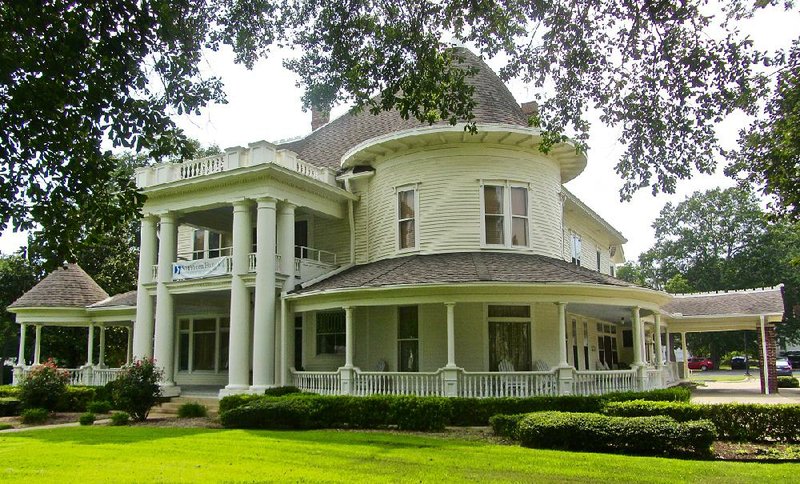ARKADELPHIA -- Almost across the street from each other, two of Arkadelphia's most imposing properties are treasures among this university town's trove of buildings with historical pedigrees.
Like other early river communities in Arkansas, Arkadelphia takes pride in its architectural heritage, which has survived man-made and natural disasters including a devastating tornado in 1997.
It boasts 24 individual structures listed on the National Register of Historic Places. Another 49 buildings of note can be found in the Arkansas Commercial Historic District, a National Register site extending along two Main Street blocks and three blocks of Clinton Street.
The neighboring mansions, James E.M. Barkman House and Capt. Charles C. Henderson House, belong to Henderson State University.
Barkman House, 406 N. 10th St., has ancestral ties to Jacob Barkman, one of the area's earliest settlers along the Caddo River in 1811. His son, James E.M. Barkman, began building the house just before the start of the Civil War in a style that combined Gothic Revival and Greek Revival.
Now housing Henderson State offices, the building has a foundation and five chimneys built of stuccoed brick. The blending of two styles makes it a distinctive transitional design bridging the move from antebellum to Victorian-era architecture.
Capt. Henderson House, 349 N. 10th St., originated in 1876 as a cottage. The captain, for whom the university is named, began a massive expansion of the property in 1903. He added a panoramic porch that curves around a two-story turret and features a six-columned portico. The structure's eclectic style incorporates Queen Anne and Classical Revival motifs.
The house was sold in 1978 to the university, which maintained a museum inside until the 1990s. Renovated in 1999, it now functions as a bed-and-breakfast inn.
An early source of income for settlers around the future Arkadelphia and surrounding Clark County was salt extraction. Having been deposited in the far distant past when the area was a seabed, the pockets of salt in stream beds could be harvested in summer when low water levels allowed crystallization in the creeks.
Those pioneer days are evoked by two homely but huge artifacts on the Henderson State campus and the lawn of Clark County Courthouse. These round kettles were used to distill salt, a valuable commodity in the first half of the 19th century for preserving meat and other uses. They held up to 200 gallons of saline water.
Arkadelphia's history from those pioneering times forward is told in ample detail at Clark County Historical Museum, 750 S. Fifth St. Available at the museum is a brochure, "Historical Tour of Arkadelphia," with details on Barkman House, Henderson House and other places of note.
For sports fans, the biggest day of the year in Arkadelphia comes each fall when Henderson State's Reddies battle Ouachita State University's Tigers in the Battle of the Ravine. That name reflects the fact that the two schools' football stadiums are just across U.S. 67 from each other.
This year's cross-town clash is scheduled for Nov. 11 -- probably not the best day to visit Arkadelphia if you have historic homes rather than football rivalry in mind.
For more information on Arkadelphia's historical sites and other attractions, call Arkadelphia Regional Economic Development Alliance and Area Chamber of Commerce, (870) 246-1460 or visit arkadelphiaalliance.com.
Weekend on 08/18/2016

